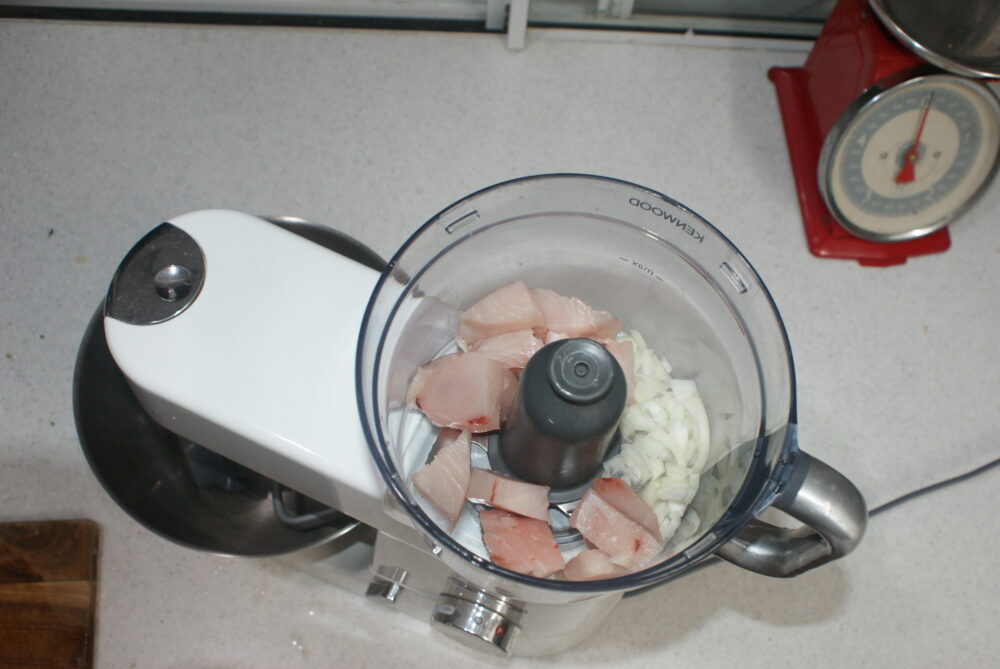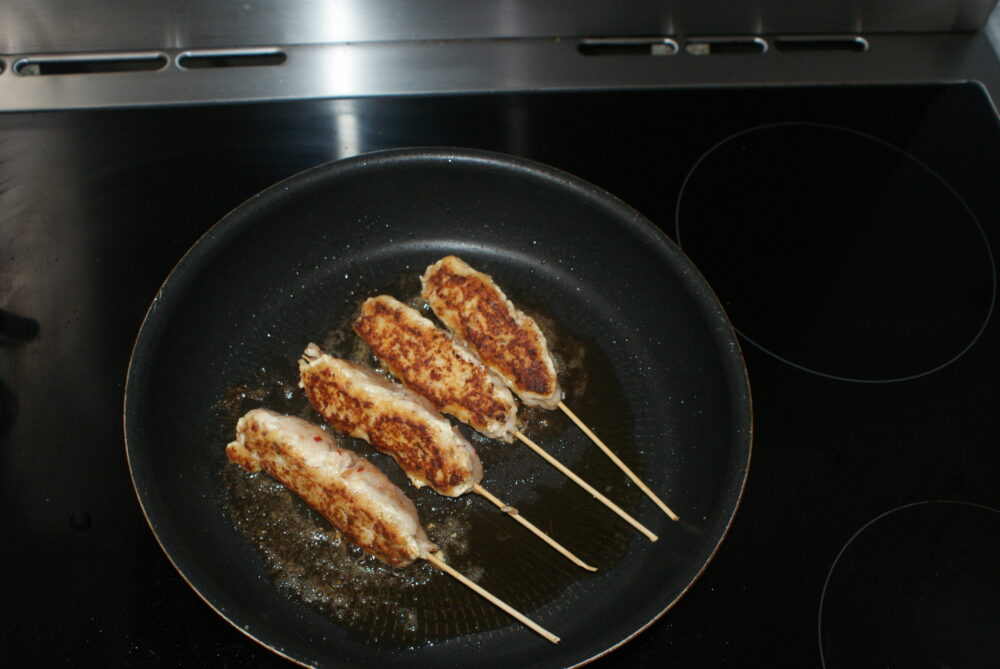Spicy Thai Trevally Koftas – By Anthony Davies
Thai food is regarded as tasty by most people, trevally less so , although smaller specimens of white-fleshed trevors like tea-leaf, bigeye and GT are actually excellent table fish. This recipe combines the exotic flavours of the far east with a middle eastern staple.
Koftas are traditionally made with minced lamb or goat moulded into a long rissole or skinless sausage on a stick before grilling. My experiment with fish needed a few changes from the basic concept, but was declared a great success by my number one critic, my fish -fussy wife.
When Leanne says “Could we have that again?” it goes into print!
Ingredients
Koftas
300g firm white fish flesh, roughly chopped. Trevally or Queenfish is ideal.
Heaped teaspoon of Katta Sambol or Sambal Oolek, minced chilli paste.
Half a medium onion, roughly chopped.
One egg, lightly beaten.
Small handful of breadcrumbs.
Dash of Thai fish sauce.
6 satay sticks, cut to fit your frypan.
Oil for cooking, Sesame if possible.
Sauce
Juice of one lemon.
Salt and palm sugar or sugar to taste.
2cm piece of ginger and turmeric, peeled. Turmeric grows like a weed anywhere north of Sydney but a teaspoon of powdered is OK to substitute. The ginger must be fresh.
Small handful of mild chillis, say 3 Jalapenos if you don’t grow your own.
2 or 3 lemon grass stalks. Grow your own in a large pot; it becomes a bamboo sized weed if you plant it in the ground.
Small bunch of coriander or Thai coriander leaves.
Pinch of cornflour.
Half a dozen kaffir lime leaves. This spice is the heart and soul of Thai cuisine, and dried or preserved leaves are available in any Asian grocery. In Cairns there is a big tree at the Tingira st boat ramp, like a lemon with strange double leaves and small knobbly fruit.
A bit of history, the word comes from Kafir, the Arabic word for “non-Muslim” . Muslim Indians, Malays and Indonesians called their Buddhist Burmese and Thai neighbours Kafir, hence the name for the tree that grew there. Muslim northern Africans also called their southern neighbours Kafir, which entered Afrikaans and English as “kaffir” an insulting name for Africans that should never be used. Many people think that kaffir lime comes from South Africa, but it’s a southeast Asian tree.
METHOD
Koftas
In a food processor, mince the fish and onion until fairly smooth. Mix with the egg and chilli paste and a small dash of fish sauce. Add breadcrumbs a pinch at a time until the texture is right, it must be JUST firm enough to mould onto the satay sticks.
Heat a good slosh of sesame oil in a large non stick pan to a gentle medium. Olive or peanut oil will do, but the sesame has more flavour. Add the koftas as you mold them; they will flatten a little on the cooking side but don’t worry. After about 5 minutes gently turn to another side. You will do this once more, ending up with a roughly triangular cross section like a Toblerone.
Sauce
Finely chop all the spices. You could do this in a small food processor, but with such a small quantity I prefer to chop by hand.
Add the lemon juice and grind well with a mortar and pestle. Don’t be lazy, give it at least 5 minutes. Leave to macerate for 5 or 10 minutes.
Squeeze the juice out of the spice mix through a fine strainer. Add sugar and salt to the juice till the flavour is right. Mix the cornflour with a little water until it’s a smooth paste. Add to the juice a little at a time, stirring until the consistency is right.
Serve with a Thai salad. Quantities given made 6 koftas, enough for a light meal for two. Double or triple the quantities for more servings. The koftas are quite robust when cooked and will stand being kept warm under foil in a low oven as you cook further batches.








